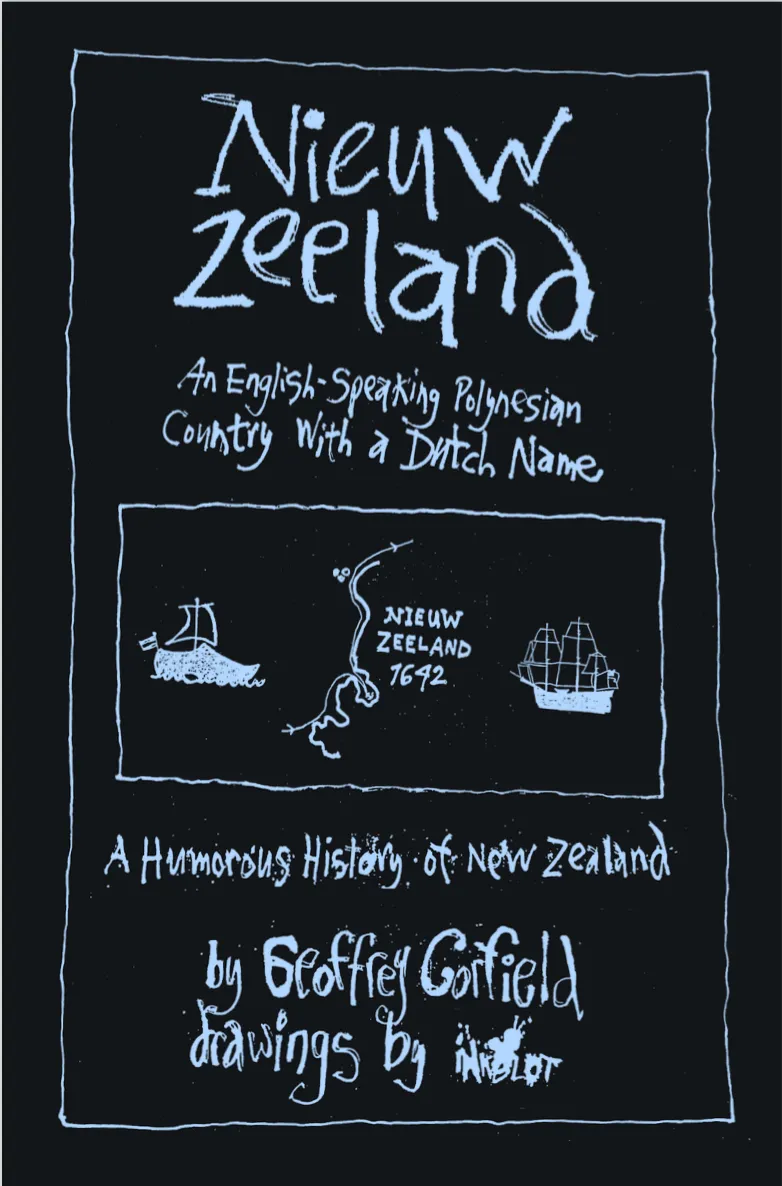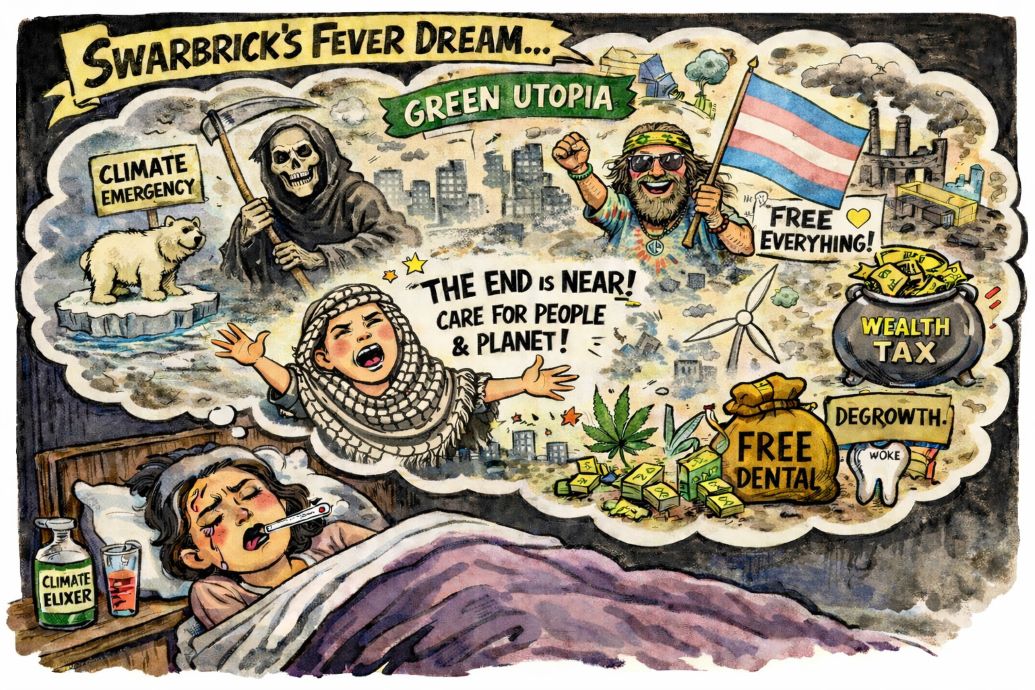Table of Contents
You can purchase Nieuw Zeeland An English-Speaking Polynesian Country With A Dutch Name: A Humorous History of New Zealand by Geoffrey Corfield from Amazon today.
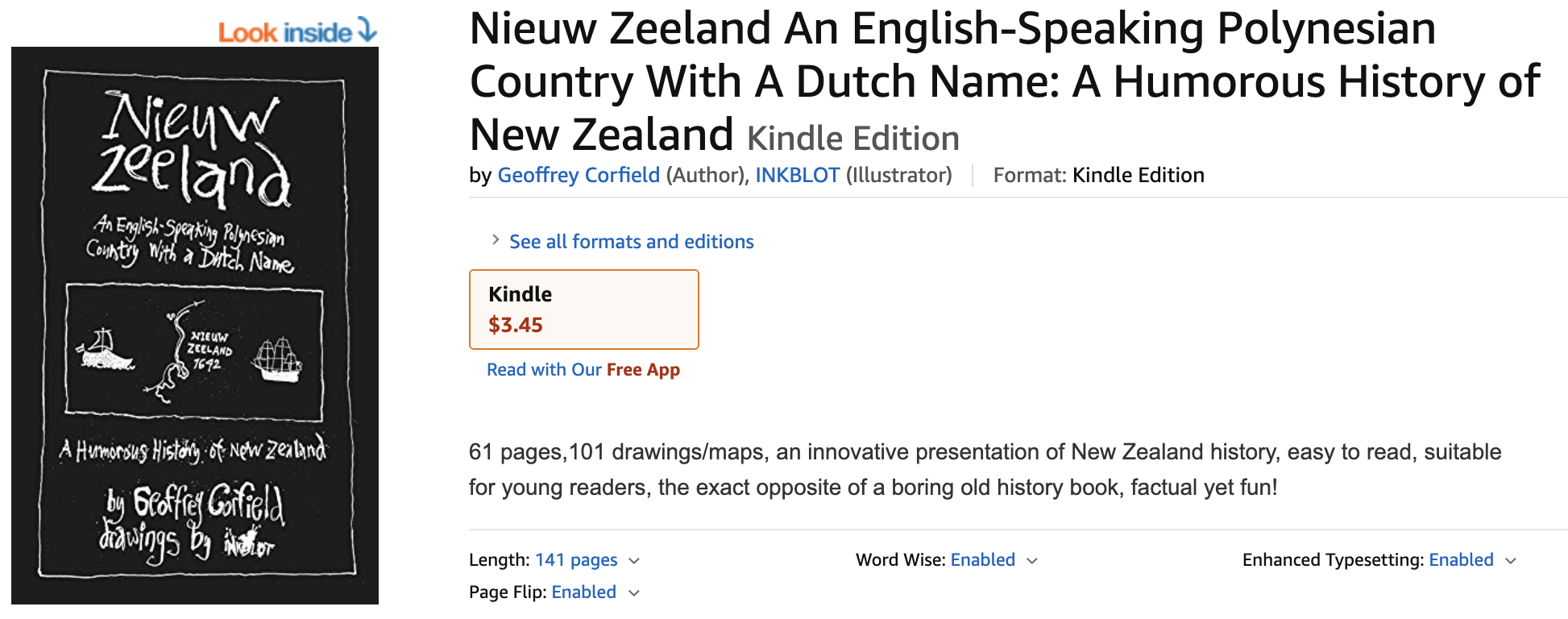
Appendix II: THE NEW ZEALAND NATIONAL ANTHEM
As of 1977, New Zealand has two official national anthems of equal status: “God Save The Queen” and “God Defend New Zealand” (before that “God Save The King/Queen” was the official national anthem, and “God Defend New Zealand” the official national hymn).
The words for “God Defend New Zealand” were written by Thomas Bracken of Dunedin, sometime in the 1870’s. In 1876 two New Zealand publications hold a poetry contest and the winner is “God Defend New Zealand” by Thomas Bracken, a journalist and editor of one of the publications (The Dunedin Saturday Advertiser).
In July 1876 The Advertiser holds another competition to compose music for five verses of the poem “God Defend New Zealand”, with prize money offered.
By 9 September 1876, the competition had received 12 entries which were then judged by a panel of three German musicians. The unanimous winner “because it had more melody than the others”, was John Joseph Woods, a school teacher from Lawrence, Otago.
The words and music were first performed together in Dunedin on Christmas Day 1876. “God Defend New Zealand” became New Zealand’s national hymn in 1940, and joint national anthem 37 years later.
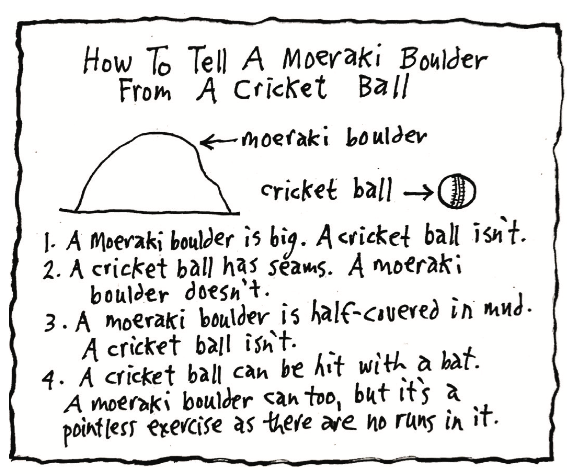
Appendix III: AUSTRALIA AND NEW ZEALAND
A lot of people not from Australia or New Zealand, think that Australia and New Zealand are very much alike and quite close together. Like cousins who are neighbours. Well, they are. And they’re not.
They think that New Zealand is just off the coast of Australia. Just over there, on the other side of Tasmania. A ferry boat ride away. Well, it is. New Zealand is 1,000 miles east-south-east of Tasmania (at its very closest point). Just off the coast.
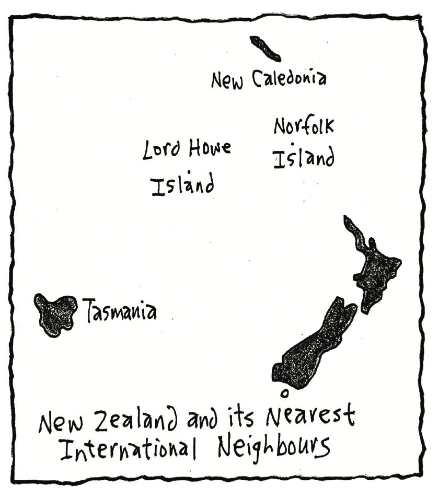
New Zealand is as close to Australia as Sri Lanka is just off the coast of Indonesia; or the Dominican Republic is just off the coast of Costa Rica; or Madagascar is just off the coast of Somalia; or Greenland is just off the coast of Scotland.
New Zealand is farther away from anywhere than you think. It’s not just next door to anything. Not just floating over the horizon from somewhere else. It’s a long ferry boat ride to New Zealand.
New Zealand’s nearest neighbours are Tasmania and New Caledonia (1,000 miles north-north-west). New Zealand is isolated. Most of the inhabited isolated islands of the world are small. New Zealand is small, but not all that small. And it’s quite inhabited. The islands of New Zealand are the biggest inhabited isolated islands in the world.
New Zealand is bigger than the United Kingdom; bigger than Holland, Belgium, Luxembourg, Ireland, Portugal and Albania put together; and almost as big as Switzerland, Denmark, Iceland and Austria put together as well. The North Island of New Zealand is bigger than Bulgaria, and the South Island is bigger than Greece. New Zealand is a small country, but not all that small. It’s bigger than the Australian state of Victoria too.
Australia and New Zealand do of course have a lot of things in common. They’re both in the same hemisphere. They were both first put on a map by a Dutchman. They both speak English, have the same Queen, and a similar system of government. They both share a love of sports, beer and wine, and putting each other down. They both celebrate ANZAC Day. Unfortunately too they also have national flags that look pretty much alike, and cause people not from Australia or New Zealand to have a great degree of difficulty in telling them apart.
New Zealand had their flag design 32 years before Australia did, but Australia formally adopted their flag one year before New Zealand. The best way to tell their flags apart however is to remember that New Zealand’s history is much bloodier than Australia’s, and so the New Zealand flag has red stars, and the Australian flag white.
But Australia and New Zealand also have some very striking differences. Australia is in southeast Asia. New Zealand is in the Polynesian South Pacific. Australia is a continent. New Zealand isn’t (although they did think at one time that it might be part of South America). Australia is big and round and hot and dry and high around the outside and low in the middle and has lots of sand. New Zealand is small and long and thin and wet and cool and high in the middle and low around the outside and has lots of water.
One of their biggest differences is that Australia has the Aborigines and New Zealand has the Maori. Two entirely different peoples. Historically-speaking, Australia is the least-warlike continent on Earth (not counting Antarctica); while inch for inch, the North Island of New Zealand was one of the most warlike places in all of the former British Empire. At one time New Zealand was known as the most dangerous place in the Pacific Ocean. At the same time the most dangerous things about Australia were stinging jellyfish, sharks, crocodiles, snakes, the occasional Aborigine spear, dying of thirst, and running out of beer. New Zealand and Australia. Similar. But not.
Appendix IV: A TALE OF TWO BAYS
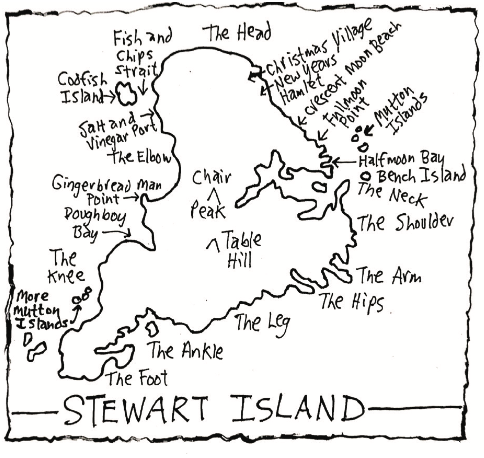
Bay One: The Bay With Too Many Names
There is a bay on the northeast coast of the North Island. A big bay. The biggest bay on the east coast of the North Island. It has a name. It has three names. It is called Hawke’s Bay, it is called Hawkes Bay, and it is called Hawke Bay. It is Hawke’s Bay in one place, Hawkes Bay in another, and Hawke Bay in another. It doesn’t matter if its name historically is Hawke Bay, it still gets called Hawke’s Bay, Hawkes Bay or Hawke Bay.
The area around Hawke’s Bay or Hawkes Bay or Hawke Bay is also called Hawke’s Bay or Hawkes Bay. Sometimes it is Hawke’s Bay, and sometimes it is Hawkes Bay. It is never Hawke Bay. But sometimes it is Hawke Bay in Hawke’s Bay or Hawkes Bay.
It is a bay and an area with three spellings. It is a bay and an area with a complicated, confusing and unnecessary spelling problem. It is a bay that needs to sort out its name. It is a bay with too many names. (Note: In this book it’s called “Hawke’s Bay”.)
Bay Two: The Bay With No Name
There is a bay on the southwest coast of the North Island. A big bay. One of the biggest bays on the North Island. It has no name. It’s north of the Cook Strait and south of the South Taranaki Bight. It looks like a bay. It’s not part of the strait and it looks too big to be part of the bight, although sometimes the name “South Taranaki Bight” is extended into it. But not often. The South Taranaki Bight usually ends at Patea.
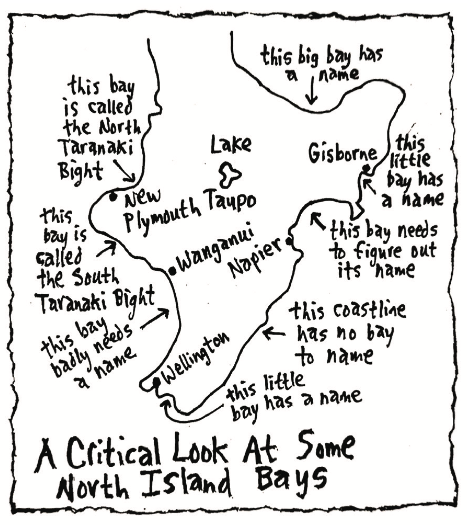
It’s definitely a bay-like indented piece of coastline. What do you call this bay-like coastline and the area of the coast attached to it? It’s a bay-looking bay and an area attached to a bay-looking bay that should have a name. A consistent, identifying name. It’s a bay that definitely needs a name. It’s a bay with no name.

__________________________
You can purchase Nieuw Zeeland An English-Speaking Polynesian Country With A Dutch Name: A Humorous History of New Zealand from Amazon today.

If you enjoyed this BFD article please consider sharing it with your friends.

